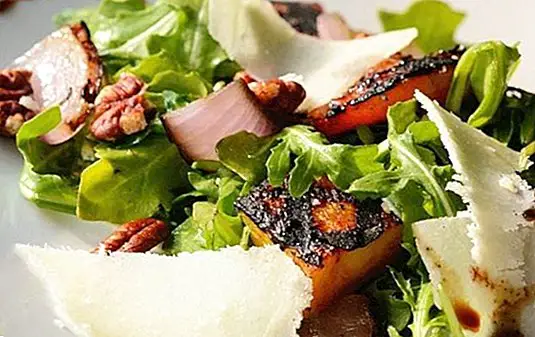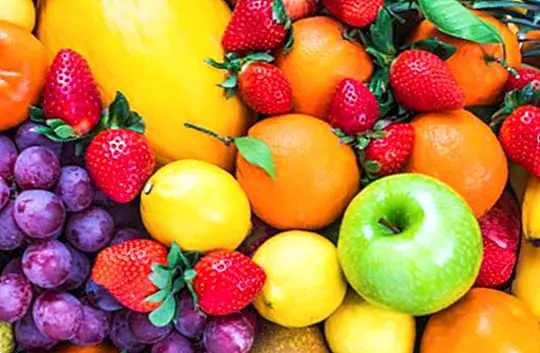Tips to assimilate iron well and absorb it better

How to improve the absorption of iron in the diet
The iron It is an essential mineral in a balanced diet for absolutely all people, since it is responsible for some very important functions in our body. In regard to its absorption, it is the intestine that regulates the adequate absorption of iron. But did you know that there are certain foods that can interfere negatively in this absorption process? At the same time, there are also foods that can help us.
Regarding the importance of relating diet to the adequate levels of iron in our body, we must take into account that while following a varied diet where the meat is consumed regularly (in rations and recommended amounts per week, and never without exceeding us), it is practically enough to ensure an adequate contribution in this mineral, this is not always the case.
For example, those who follow a diet or low food intake of animal origin such as meat and its derivatives, such as vegetarian or vegan food, it is very common to suffer from iron deficiency and related problems, such as the case of the iron deficiency anemia.
The main cause is found in the type of iron that this type of food contains. That is, while the iron that we find in the meat is very well absorbed by our organism(It is what is known asheme iron), the one contained in vegetables does not tend to be absorbed so easily. You know why? Fundamentally because heme iron is, from a structural point of view, quite similar to the iron present in human beings. Therefore, its assimilation is very simple.
In these cases, an excellent solution is to choose to add to our diet Foods that facilitate and improve the absorption of iron in our body; that is, they help iron to be better fixed by our organism.
The best foods to facilitate the absorption of iron
Foods high in vitamin C
Among other important functions, vitamin C (ascorbic acid) favors the absorption of iron. Therefore, a great option is always to opt for foods that have a high content of this vitamin, as is the case of citrus fruits (lemons, limes and oranges), kiwi and vegetables such as peppers, broccoli or tomato.
In addition, it is advisable to eat fruits or citrus juices as a dessert at least once a day can be a good idea, in addition to eating plant foods with high iron content, such as vegetables. The latter should be compensated with others rich in vitamin C.

Foods high in B vitamins, such as vitamin B6
The vitamins of group B, in particular vitamin B6, are tremendously interesting when it comes to improving the absorption of iron by our body. In fact, they not only help in the increase of the absorption, but they take part positively in the formation of the hemoglobin.
And what foods are interesting in this regard? Highlights include rice, lentils, bananas, whole grains and pasta.
Foods with high iron content
It is also essential to maintain a diet rich in iron. For this, we must differentiate the two types of iron that can be found in food:
- Heme or hemínimo iron (animal origin):It is a type of iron that has a good absorption. We find it in meat and its derivatives, as well as in fish and shellfish.
- Iron not heme or not hemínimo (vegetable origin):Its absorption or assimilation is somewhat lower. It is the one we find in foods such as vegetables and vegetables, and also in eggs.
That is, we find iron especially in foods of animal origin such as beef, pork, lamb, duck, chicken, turkey and partridge. They also highlight fish such as salmon, sardines, and seafood such as clams and oysters.
How to better combine food and improve iron absorption
In addition to adopting a diet rich in iron and foods that help positively in the absorption process, there are also some tips that can help us to better combine different foods, to ensure that the assimilation of iron is easier by part of our body. Take good note:
- Combine foods rich in vitamin C with foods rich in iron "no hemo". For example, combine legumes with citrus or other vegetables rich in vitamin C, such as peppers or broccoli.
- Combine legumes with meats and add foods with a high content of beta-carotene. For example: lentils with duck meat and pumpkin, or beans with beef and carrots.
How to improve the absorption of iron if I am vegetarian or vegan?
Given that this type of diet is based precisely and fundamentally on the consumption of foods of vegetable origin, one of the keys is to try to help our body to be able to better assimilate iron "non-heme".
A very useful option is to combine foods rich in vitamin C with foods rich in non-heme iron. A good example is to combine cereals such as amaranth or quinoa with vegetables or with vegetables such as peppers or broccoli.

Among the main vegetable sources with a higher iron content are the: whole grains, spinach, chard, parsley, kale, legumes, mushrooms, spices and dried fruits. These foods should be taken together with foods rich in vitamin C, since this way we will improve absorption.
While, among the main vegetables rich in vitamin C stand out: guava, black currant, red pepper, parsley, kiwi, broccoli, brussels sprouts, papaya, citrus fruits (mainly orange and lemon), cauliflower, tomato and Swiss chard.
Another interesting option is to add vinegar to legumes such as chickpeas or lentils. In this way we get to acidify the dish, and in this way we improve the bioavailability of the "non-heme" iron.
For those who enjoy the wonderful and refreshing salads, it is recommended to season the vegetables with freshly squeezed lemon juice, a liquid rich in vitamin C.
Foods that we should avoid because they inhibit the absorption of iron
At the same time that there are foods that favor and improve the absorption of iron, there are also others that what they do is the opposite. That is, they tend to inhibit iron absorption, especially of iron, not heme. They are the following:
- Tannins:We find them mostly in drinks with tea, coffee and red wine. Also in other drinks, like black beer.
- Polyphenols:We find it in cocoa, oregano, raspberries, apples and cranberries.
- Alkaline substances:Neutralize acid secretion in the stomach, which means that iron can not be stored in a ferrous state for absorption.
- Dairy and egg proteins:Although the egg contains non-heme iron, it has been shown that proteins from dairy products (casein) and egg white hamper the absorption of iron.
- Foods rich in calcium:Both foods with high calcium content and supplements tend to inhibit iron absorption.
- Oxalates:They are compounds derived from oxalic acid, which are found in foods such as chocolate, tea, spinach, kale or beet.
As we can see, the key is not to eliminate or reduce this type of food, since in reality they are nutritious and healthy foods, totally recommended, but not to consume them together with foods rich in iron, so as not to cause the body to be incapable. to absorb it. This article is published for informational purposes only. You can not and should not replace the consultation with a Nutritionist. We advise you to consult your trusted Nutritionist.


